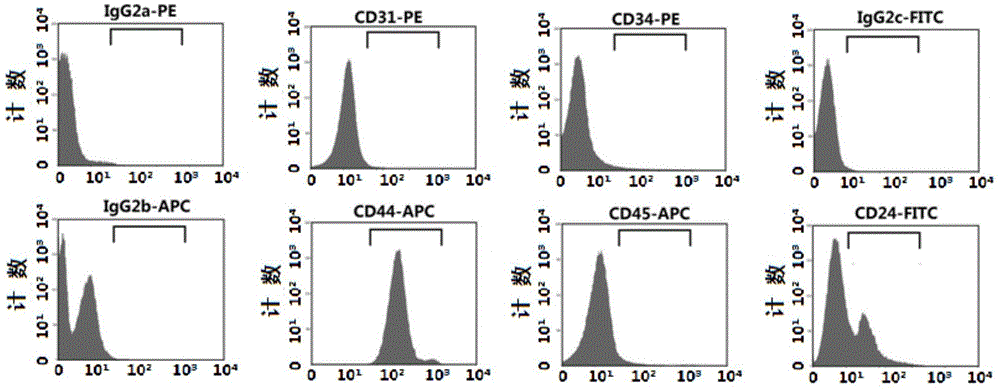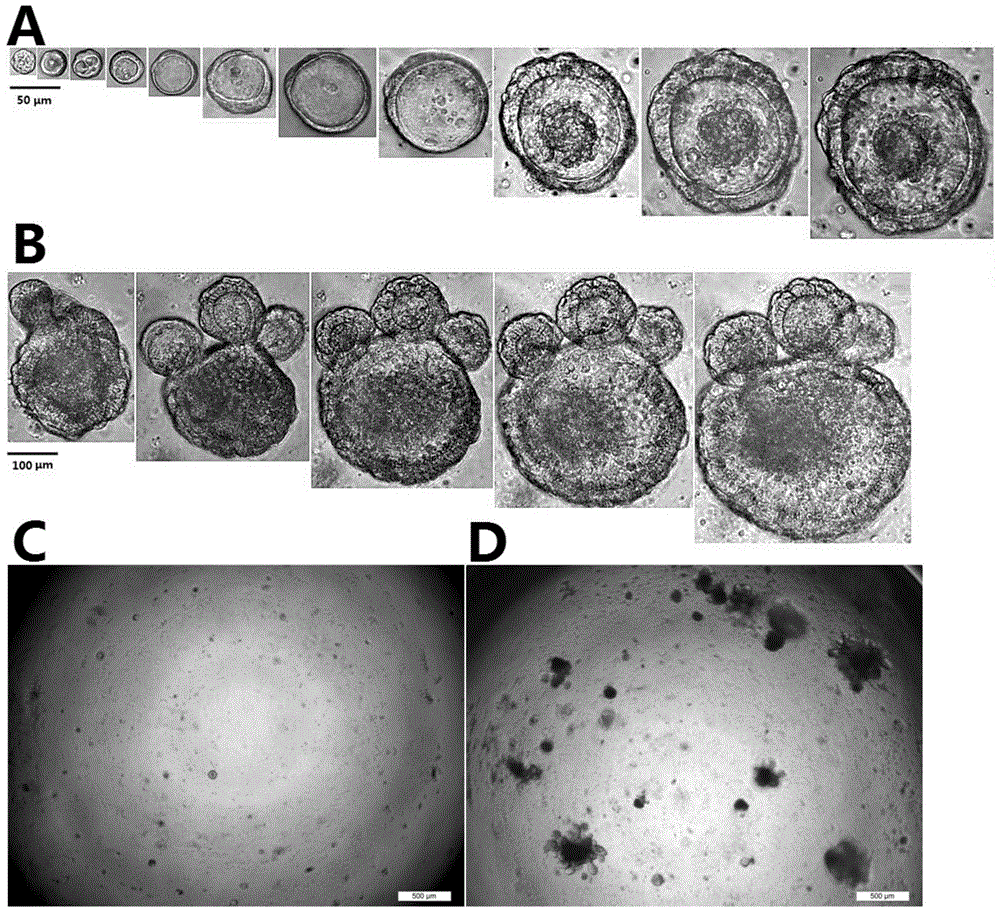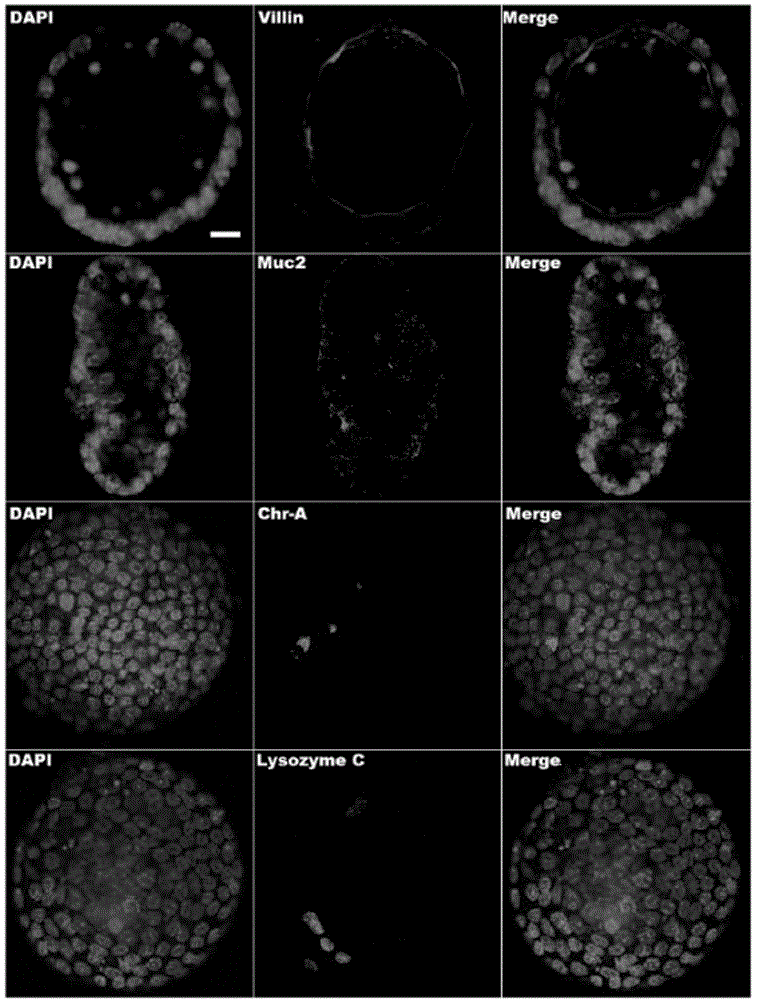Application of Y-27632 inhibitor to CD44 positive intestinal stem cell sorting
A technology of Y-27632 and MY-27632, which is applied in the application field of Y-27632 inhibitor in the sorting of CD44-positive intestinal stem cells, can solve the problems of expensive transgenic mice, reduced number of sorted stem cells, and affecting cell viability, etc. Achieve the effects of simple operation, high product purity and improved survival rate
- Summary
- Abstract
- Description
- Claims
- Application Information
AI Technical Summary
Problems solved by technology
Method used
Image
Examples
Embodiment 1C57
[0088] Example 1 Isolation and phenotype identification of CD44 positive cells in C57BL / 6 mice
[0089] 1. Under sterile conditions, obtain the whole small intestine of C57BL / 6 mice (Experimental Animal Center, Academy of Military Medical Sciences of the Chinese People's Liberation Army) that was used in other people's experiments. -hanks fluid to wash away intestinal contents.
[0090] 2. Gently scrape the surface of the intestinal lumen with the sterilized coverslip to remove the villi in the epithelium.
[0091] 3. Cut the intestinal tissue into 3mm pieces with sterile scissors, place them in a 50mL centrifuge tube, and rinse repeatedly with pre-cooled D-hanks until the supernatant is clear.
[0092] 4. Add separation solution and incubate for 30 minutes with shaking at 4°C.
[0093] 5. After the incubation, wait for the tissue to settle to the bottom of the centrifuge tube, carefully aspirate the separation solution; centrifuge at 1000 rpm for 5 minutes, and discard the ...
Embodiment 2
[0103] Induction culture of embodiment 2CD44 positive cells
[0104] 1. Same as steps 1-13 in Example 1, magnetic bead sorting of CD44-positive cells in C57BL / 6 mice (positive selection), with CD44-negative cells (negative selection) as a control.
[0105] 2. Resuspend the Matrigel that has been melted on ice in the ratio of 10 μL Matrigel per 100 sorted cells. This step should be performed on ice to prevent the Matrigel from solidifying due to temperature rise.
[0106] 3. After the cells are premixed, add the Matrigel-cell suspension at a ratio of 10 μL Matrigel / well to a 96-well culture plate preheated at 37°C (100 sorted cells / 10 μl Matrigel / well); when inoculating, The Matrigel should be centered on the bottom of the plate, avoiding the glue touching the walls.
[0107] 4. Incubate the inoculated cells in a 37°C incubator for 5 minutes to finalize the Matrigel; prepare a complete medium.
[0108] 5. After the incubation, add 100 μL of complete medium to each well and st...
Embodiment 3
[0110] Example 3 Differentiation of CD44 positive cells into 4 types of intestinal epithelial cells
[0111] 1. After 2 weeks of in vitro culture, discard the complete medium; add pre-cooled neutral formaldehyde solution (200 μL / well) to the 96-well plate to fix the “mini-intestine” differentiated from CD44-positive cells, 4°C, 30min .
[0112] 2. Wash off the neutral formaldehyde fixative with pre-cooled DPBS (2-3 times); add pre-configured 0.025% Triton X-100 solution (200 μL / well) to the 96-well plate, and incubate at 4°C for 10 minutes .
[0113] 3. Blow Matrigel with pre-cooled DPBS solution to dissolve and release the inner "mini intestine"; centrifuge at 1000rpm for 2min.
[0114] 4. After washing the "mini intestine" pellet 2-3 times with DPBS, transfer it to a new EP tube.
[0115] 5. Incubate the "mini intestine" pellet with 1 mL of PBS solution containing 5% BSA at 4°C for 30 min.
[0116] 6. Add the pre-configured primary antibody working solution, including: a...
PUM
 Login to View More
Login to View More Abstract
Description
Claims
Application Information
 Login to View More
Login to View More - R&D Engineer
- R&D Manager
- IP Professional
- Industry Leading Data Capabilities
- Powerful AI technology
- Patent DNA Extraction
Browse by: Latest US Patents, China's latest patents, Technical Efficacy Thesaurus, Application Domain, Technology Topic, Popular Technical Reports.
© 2024 PatSnap. All rights reserved.Legal|Privacy policy|Modern Slavery Act Transparency Statement|Sitemap|About US| Contact US: help@patsnap.com










